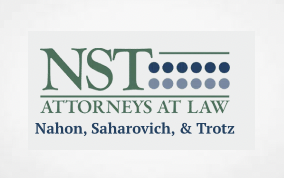On January 23, 2023, the Quebec Superior Court denied leave to pursue a class action against HEXO Corp. The proposed class action raised various allegations of misrepresentation and breaches of disclosure obligations over the period of April 2018 to March 2020.1
The decision determined that the announcement of negative news followed by a decline in a public issuer’s stock price is not enough on its own to satisfy the requirements of claims for statutory misrepresentation. Arguments based on backwards reasoning with the benefit of hindsight will not meet the evidentiary burden on plaintiffs to show a reasonable possibility that the action will be resolved in their favour.
A. Factual Background
i. Supply Agreement
In April 2018, HEXO issued a press release announcing that it entered into a supply agreement with what became the Société québécoise du cannabis (the “SQDC“) to be the preferred supplier of cannabis products in Quebec for five years (the “Supply Agreement“). The press release stated that the Supply Agreement required SQDC to purchase 20,000 kilograms of product in the first year following the legalization of cannabis. It disclosed that the SQDC had the right to terminate the agreement under certain circumstances and included cautionary language regarding the reliance on forward-looking statements.
The company’s Management Discussion and Analysis (“MD&A“) underscored the strategic importance of its relationship with SQDC and estimated that potential revenue under the Supply Agreement could reach $1 billion.
ii. Corporate Acquisition
In March 2019, HEXO issued another press release announcing that it would acquire Newstrike, another publicly traded cannabis company. With that acquisition, HEXO estimated its net revenues from the sale of cannabis in Canada would be more than $400 million.
The announcement included that the acquisition of Newstrike would add approximately 470,000 square feet of additional production space in Ontario’s Niagara Region and achieve annual synergies of approximately $10 million.
The day after this announcement, in a call with analysts, the company stated that 250,000 square feet of the Niagara production space was licensed and operational.
iii. Revenue Estimates
Following the announcement of the acquisition, the company made statements about estimated revenues. For example, in the company’s MD&A dated June 12, 2019, it estimated that revenues would double in Q4 2019 because of, among other things, the Supply Agreement and the Newstrike acquisition.
iv. String of Bad News
Over the course of the following nine months, the company issued a series of negative announcements that caused repeated drops in the company’s stock price. These announcements included:
- The company was withdrawing its revenue guidance of $400 million and was right-sizing its operations, including winding down operations at the Niagara facility acquired from Newstrike.
- “Block B” of the Niagara facility (approximately 17 per cent of the facility) was discovered as not being adequately licensed. Cultivation and production activities in the unlicensed space were immediately stopped. The company subsequently announced it would sell the Niagara facility.
- HEXO’s Q4 2019 financial results were approximately 40 per cent lower than forecasted.
- HEXO recorded three separate impairments on inventory in the range of $265 – $280 million. The company identified material weaknesses in its internal controls of its financial reporting in various areas including its year-end inventory count.
- SQDC failed to purchase its 20,000-kilogram commitment under the Supply Agreement in the first year and HEXO was not going to enforce this commitment because of its overall business relationship with the SQDC and its position in the Quebec market.
B. Alleged Misrepresentations
Owing to the decline in the company’s stock price, the plaintiff sought authorization to institute a secondary market claim against HEXO, filed under the Quebec Securities Act, and further sought leave to pursue a class action against the company for damages arising from statutory and civil misrepresentations.
The plaintiff alleged HEXO misrepresented that:
1. The Supply Agreement guaranteed revenues associated with the sale of 20,000 kilograms of cannabis in the first year;
2. The acquisition of Newstrike:
a. included fully licensed and operational facilities;
b. would generate more than $10 million in annual synergies;
c. along with the Supply Agreement, would result in the doubling of HEXO’s net revenue between Q2 and Q4 in 2019;
3. HEXO would achieve revenue of greater than $400 million for the 2020 fiscal year;
4. HEXO’s inventories were accurate and its internal controls were effective.
C. Why the Suit Failed
i. Supply Agreement
The Court disagreed that HEXO’s statements regarding the SQDC’s purchase commitment of 20,000 kilograms of cannabis amounted to a “guarantee” of first-year revenue under the Supply Agreement. The impugned statements were found to simply provide a description of the SQDC’s purchase commitment in the first year under the Supply Agreement. The Court expressly commented that courts do not make assessment with the benefit of hindsight. The fact that the SQDC did not fulfil its first-year purchase commitment or that the defendants decided not to enforce the take-or-pay feature are not evidence that the public statements were untrue or misleading at the time they were made.
The Court reached its decision after considering these factors, which effectively qualified the alleged misrepresentation:
(i) HEXO disclosed that the SQDC could terminate the Supply Agreement under certain circumstances rebutting any notion of guaranteed sales;
(ii) HEXO’s statements about “strong business certainty through Year 1 post-legalization” referenced several factors and not just the SQDC’s commitment under the Supply Agreement;
(iii) HEXO’s press release contained cautionary language that forward-looking statements “should not be read as assurances of future performance or results”; and
(iv) the plaintiff was aware that this was a “new and volatile market.”
ii. Newstrike Acquisition
Although the plaintiff alleged HEXO misrepresented the Niagara facilities were fully licensed and operational since March 2019, the plaintiff’s evidence demonstrated that the licensing deficiency only became known around July 30, 2019, which is when HEXO disclosed they were made aware of the deficiencies.
In respect of the impugned statements that operations at the Niagara facility would be licensed for cannabis production, HEXO announced on October 24, 2019, it had temporarily suspended its operations at the Niagara facility as part of cost-cutting measures. Hence, the fact that one section of the facility was not adequately licensed could not reasonably be expected to have any impact after October 24 on an investor’s decision to buy or sell HEXO securities.
The Court further noted that the mere fact that projected synergies failed to be realized was not evidence that the impugned statements were misrepresentations of material facts at the time they were made. In any event, HEXO clearly disclosed the risk that the synergies may not be achieved so that investors would not rely on the projections.
As for the fact that HEXO’s Q4 revenues were lower than forecasted and the lowering of HEXO’s financial guidance, the documents in question contained the assumptions underlying the forecasts and cautionary language that specifically warned readers that projections are not guarantees of future performance or results.
iii. Impairment Loss on Inventory and Internal Controls
In terms of the impairment loss on inventory, the Court found that the plaintiff failed to link any of the subsequent disclosures on impairment to a previous misrepresentation of a material fact at the time the statement was made. Although there was a restatement of certain financial statements, the Court accepted that the impairment loss was due to subsequent events and new and available third-party information about circumstances surrounding the ongoing development of cannabis use.
The plaintiff also failed to establish that the impairment disclosure concerned a material fact. The Court found the plaintiff failed to lead evidence that ties the decline in HEXO’s share price to the disclosure of the adjustments to the impairment loss on inventory.
The Court further determined that the plaintiff failed to identify any HEXO public statements which contain alleged misrepresentations regarding its internal controls. The company disclosed in October 2018 that it was implementing a new enterprise resource planning system and cautioned that the related design and testing process could result in errors and/or inaccurate information for management and financial reporting.
D. Conclusion
The Court’s decision demonstrates that courts will look deeper than simply pointing to a negative news release and corresponding stock price drop to demonstrate reasonable probability of success for leave to bring a statutory, secondary market claim for misrepresentation. The decision also highlights the importance of using robust safe harbour language for forward-looking statements and risk disclosures in MD&As.
Footnote
1. Dionne c. Hexo Corp., 2023 QCCS 162 (CanLII)
The content of this article is intended to provide a general guide to the subject matter. Specialist advice should be sought about your specific circumstances.
https://www.mondaq.com/canada/cannabis–hemp/1278752/quebec-court-dismisses-proposed-class-action-against-cannabis-company?email_access=on



































